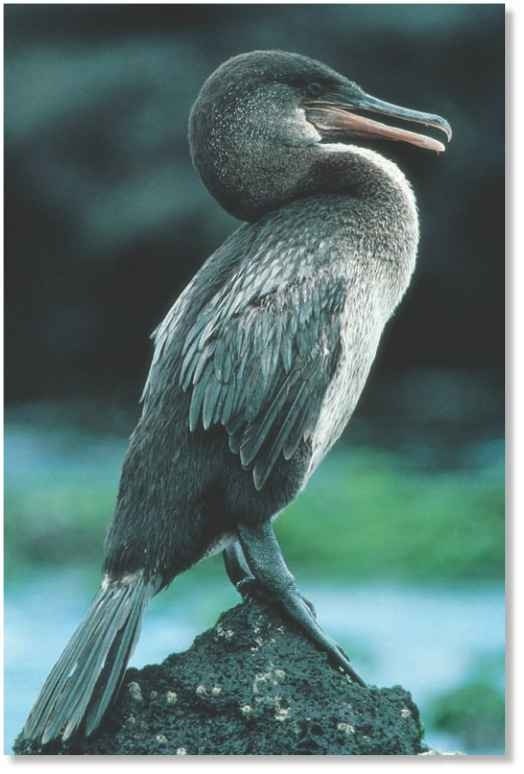ORDER
Pelecaniform.es
FAMILY
Phalacrocoracidae
GENUS & SPECIES
KEY FEATURES
• Wings have evolved into small appendages, useless for flight
• Feeds mainly by living in the waters near its isolated Galapagos Islands habitat
• Often rests with its stubby wings spread out to dry, as do birds that fly
• Relies on its strong, webbed feet for swimming and diving
WHERE IN THE WORLD?
Found only on the rocky shorelines and inshore waters of Fernandina Island and Isabela Island, 2 of the 13 main islands in the Galapagos; total range is limited to less than I 250 miles of coastline
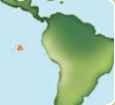
Lifecycle
Having lost the ability to fly, the flightless cormorant now permanently resides on the Galapagos Islands and is rarely found more than a half mile from its breeding grounds.
Habitat
The Galapagos Islands are home to many unique animal species found nowhere else in the world, including the flightless cormorant. These islands lie in the Pacific Ocean about 600 miles off the eastern coast of South America. The flightless cormorant is limited to only Fernandina Island and the western and northern coasts of Isabela Island, 2 of the 13 islands of Galapagos.
The flightless cormorant favors a relatively cool, dry climate. It feeds exclusively on marine life in the cold, food-rich inshore waters, and shelters and nests along the rocky coastlines.

A Island home
Once capable of flight, the flightless cormorant now only swims and walks around the beautiful Galapagos Islands.
The El Nino event of 1982-1983 reduced the flightless cormorant’s population by half, but 18 months later, their numbers were back to normal.
In 1835, Charles Darwin used his observations of “the Galapagos Islands when constructing his theory of evolution for the topic On The Origin of Species.
Food & hunting
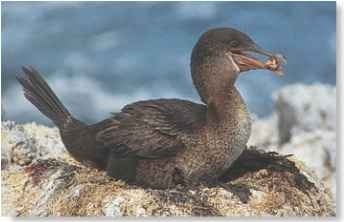
The cormorant is an efficient daytime hunter with a voracious appetite. It feeds mainly on fish, octopus, squid and eel, along with the occasional invertebrate and crustacean. The bird dives and expertly swims after its prey. The indigestible parts of its prey, such as scales and bones, are regurgitated as pellets. The cormorant feeds at least
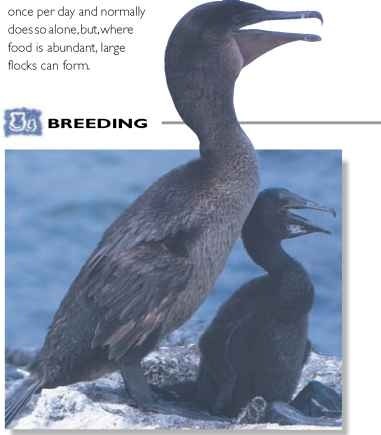
DIVE BOMBER
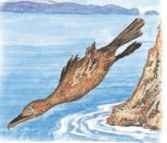
Dive…
With a little leap, the flightless cormorant dives from the shoreline into the cold water in search of food.
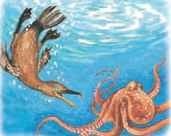
Swim…
Using its powerful feet for propulsion, the cormorant spots an octopus and quickly changes direction to catch it.
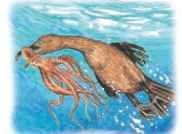
Pursuit…
Although it speeds off, the octopus is no match for the cormorant, which uses its hooked bill to catch and hold its prey.
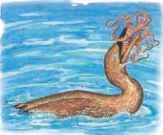
Gulp
The cormorant returns to the water’s surface and maneuvers the octopus by tilting back its head and gulping it down.
Breeding occurs throughout the year, but peaks from March to September. Unlike most cormorants, which begin courtship on land, the flightless cormorant starts its mating display on the water. This aquatic dance, which includes neck raising and bill movements, occurs from 10 days to 6 weeks before egg laying; the pair bonds at the nest site just before mating.
The female lays from 1-4 eggs in a large nest made of seaweed. Both sexes share incubation duties; the eggs then hatch after about 35 days. Born naked and helpless, chicks are fed regurgitated food by the parents and fledge at about 60 days. Relatively few chicks survive to adulthood, though: breeding success is low due to predators, such as feral dogs, which kill chicks and eat eggs.
Rocky start
The chicks start to swim after one month.
Conservation
The flightless cormorant has been classified as vulnerable by the IUCN. This species has suffered tremendous declines with the introduction of predatory mammals such as feral dogs. These dogs now pose the biggest threat to nesting birds. The flightless cormorant is also accidentally killed in traps and nets used for catching lobsters and tuna. The population is estimated to be around 900-1,200 individuals.
Behavior
With an extremely limited range, the flightless cormorant has undergone several adaptations. The mild climate of the Galapagos means it doesn’t need to migrate south in the winter; with abundant food nearby it doesn’t travel great distances to eat; and predators for many centuries were few. Thus, over time, the wings of this cormorant have become greatly reduced and are now about the size of penguin flippers. While the flightless cormorant has totally lost the power of flight, it has become a skilled swimmer and developed stronger feet than other cormorants. On land, the flightless cormorant waddles clumsily due to the shortness of its legs and its large, webbed feet; underwater it is swift and graceful.
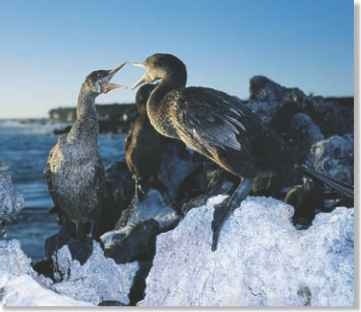
A Noisy neighbors
The flightless cormorant associates in small colonies of up to 12 breeding pairs and their offspring.
PROFILE
Flightless Cormorant
Unable to fly, the flightless cormorant uses its wings to maneuver easily underwater and pursue favorite foods, such as squid.
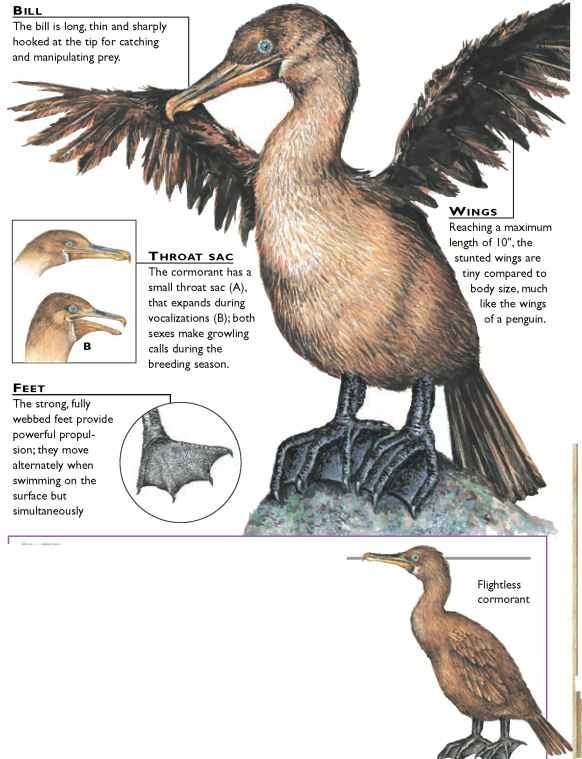

Guanay cormorant
Creature comparisons
The guanay cormorant (Phalacrocorax bougainvillii) has a much wider range than its flightless cousin. It lives along the Pacific coast of South America from Peru to Chile and on the Atlantic coast of Argentina. Although the guanay cormorant can fly, it lives entirely in a marine environment and feeds mainly by diving, much like the flightless cormorant The guanay cormorant feeds entirely on fish, such as sardines. Reaching a length of 30″ and a weight of 7 lbs., the guanay cormorant is much smaller than its flightless cousin.
| VITAL STATISTICS | |
| Weight Length | 5.5-9 lbs. 35-40″ |
| Sexual Maturity | 2 years |
| Breeding Season | All year, but mainly March -September |
| Number of Eggs | 1-4; usually 2-3 |
| Incubation Period | About 35 days |
| Fledging Period | About 60 days |
| Breeding Interval | Usually 1 year, but may breed twice per year ; |
| Typical Diet | Fish, eels, squid and octopus |
| Lifespan | Unknown |
RELATED SPECIES
• The flightless cormorant belongs to the order Pelecaniformes, which contains tropicbirds, pelicans, gannets, boobies, darters and frigatebirds. There are65 species in the order, but the cormorant family, Phalacrocoracidae, is the largest, with 39 species in only 1 genus. Relatives include the great cormorant, Phalacrocorax carbo and the bank cormorant, P. neglectus.
